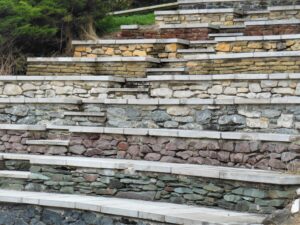A collection of photographs and descriptions of building stones in Liverpool and Cheshire.

Building stone in the crypt of Catholic cathedral, Liverpool
The granite used in this building shows flow orientation of the white feldspar phenocrysts (larger crystals, bigger than the rest of the crystals in the rock, and formed first, so with time to grow larger), and cross-cutting veins that must have been one of the last features to form in the rock because they cut across all the older features in the rock. Think about how and why an igneous rock like this could flow so that the phenocrysts align…
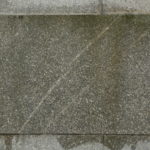
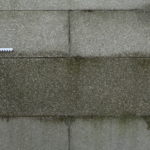
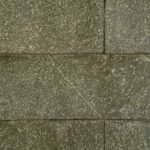

Polished slab (cut as a facing stone) in the Pitcher laboratory, Earth & Ocean Sciences Dept., Liverpool University.
The granite shown in these images also shows flow orientation of feldspar phenocrysts, pink this time, and xenoliths, which are fragments of surrounding rock that were incorporated into the magma that then cooled and crystallised to form this rock.
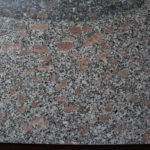
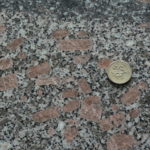


Building stone used in boundary walls of the University of Liverpool
Triassic sandstone blocks in a wall in Brownlow Street, probably from the Wilmslow Sandstone Formation which is about 250 million years old. The blocks were probably sourced from the Edge HIll railway cutting which is just the other side of this wall and the yellow and red colours reflect different states of oxidation of iron coating the sand grains. The blocks show various sedimentary structures such as parallel bedding, cross bedding, and soft-sediment deformation features. Look for laminations, planar bedding, cross bedding, convolute lamination and try to work out the way-up direction indicated by these structures – have the wall builders put them in upside down?

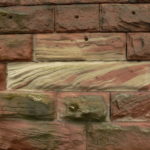
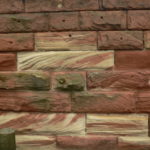
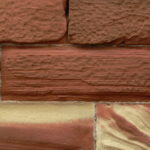

Building stones used in the Harold Cohen Library, Liverpool University
The building stone here is Portland Stone, an Upper Jurassic limestone about 140 million years old, that outcrops in southern England, especially in Dorset. Part of this rock is best described as a bioclastic limestone. Other parts are oolitic limestone. This is a very commonly used building stone, and here it has been weathered so that details of the slightly more resistant bioclasts (fossil fragments) can be clearly seen.
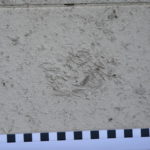


Facing stone used in the Physics Building, Liverpool University
Rock is used in this building as a facing stone: a thin rock layer used for ornament and/or protection as an outer layer of stone on a brick wall. The rock is Carboniferous Limestone, probably about 350 million years old. It is a fossiliferous limestone that contains crinoids, brachiopods, corals but also geopetal structures (void structures filled with minerals, that are sometimes great way-up indicators) and stylolites, which is irregular surfaces produced by dissolution of the rock during burial.

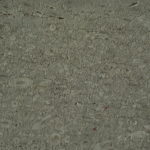
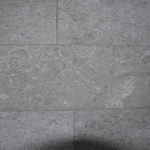

Facing stone used on the Oceanography/Maths Building, Liverpool University.
This facing stone is the rock called serpentinite, which is a metamorphic rock most commonly produced by water-induced metamorphism of the Earth’s mantle rocks. This example shows faults that offset veins and other lineations in the rock.
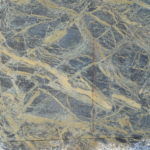

Facing stone used on the Engineering Building, Liverpool University.
These are volcani-clastic rocks from the Ordovician Borrowdale Volcanics Group that outcrop not far from Liverpool in the Lake District. These examples showing details of bedding, laminations and perhaps also a cross-cutting tectonic cleavage?
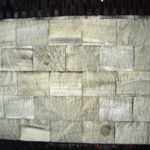
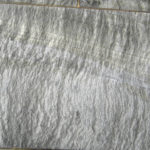
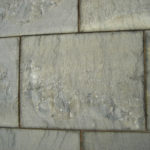

Stone used for paving or as a flagstones, Chester.
These paving slabs or flagstones are made of mica-rich sandstone, probably Upper Carboniferous in age, so around 300 My old. The surfaces of these slabs show vertical burrows, probably produced by a worm-like creature, and primary current lineations that are the stripe features on the surfaces of the slabs, produced by either slow or fast flowing water
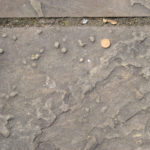
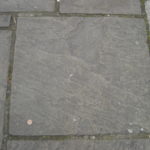

Stone used for paving or as a flagstone, Little Moreton Hall, Cheshire.
This flagstone is mica-rich sandstone. There are ripple marks on the surface of this slab.



